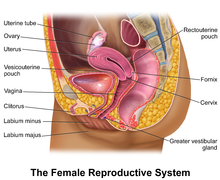FACTS ABOUT THE EBOLA VIRUS
Ebola virus disease (EVD) or Ebola hemorrhagic fever (EHF) is the human disease caused by ebola viruses. Symptoms start two days to three weeks after contracting the virus with a fever, throat and muscle pains, andheadaches. There is then nausea, vomiting and diarrhea along with decreased functioning of the liver and kidneys. At this point some people begin to have problems with bleeding.[1]
The disease is first acquired by a population when a person comes into contact with the blood or bodily fluids of an infected animal such as a monkey or fruit bat. Fruit bats are believed to carry and spread the disease without being affected by it. Once infection occurs, the disease may be spread from one person to another. Men who survive may be able to transmit the disease sexually for nearly two months. To make the diagnosis, typically other diseases with similar symptoms such as malaria, cholera and other viral hemorrhagic fever are excluded. The blood may then be tested for either antibodies to the virus, the viral DNA, or the virus itself to confirm the diagnosis.[1]
Prevention involves decreasing the spread of the disease from infected monkeys and pigs to humans. This may be done by checking these animals for infection and killing and properly disposing of the bodies if the disease is discovered. Properly cooking meat and wearing protective clothing when handling meat may be helpful, as may wearing protective clothing and washing hands when around someone sick with the disease. Samples from people with the disease should be handled with an extra degree of caution.[1]
There is no specific treatment for the virus with efforts to help people including giving the person either oral rehydration therapy or intravenous fluids.[1] The disease has a high death rate: often between 50% and 90%.[1][2] It typically occurs in outbreaks in tropical regions of Sub-Saharan Africa.[1] Between 1976, when it was first identified, and 2014, fewer than 1,000 people a year have been infected.[1][3] The largest outbreak as of 2014 is the ongoing 2014 West Africa Ebola outbreak, which is affecting Guinea, Sierra Leone and Liberia.[3] The disease was first identified in theSudan and the Democratic Republic of the Congo. Efforts are ongoing to develop a vaccine; however, none exists as of 2014
